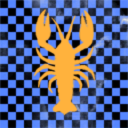Share
Corporation
| Name | Lobster nipple pinchy |
| Ticker | KRABB |
| Alliance | - |
| Faction | - |
| Ceo | EVE System |
| Members | 0 |
| URL | http://www.boydrice.com |
| Tax Rate | 10% |
| corporationID | 98172294 |
Members [0]
Description
Requirements:
10mil SP. t2 guns preferred.
Must have a microphone.
Full api key check
ConvoSecretMoonBase
Lobsters are invertebrates with a hard protective exoskeleton. Like most arthropods, lobsters must moult in order to grow, which leaves them vulnerable. During the moulting process, several species change colour. Lobsters have 10 walking legs; the front three pairs bear claws, the first of which are larger than the others.[3] Although, like most other arthropods, lobsters are largely bilaterally symmetrical, some genera possess unequal, specialised claws.
Lobster anatomy includes the cephalothorax which fuses the head and the thorax, both of which are covered by a chitinous carapace, and the abdomen. The lobster's head bears antennae, antennules, mandibles, the first and second maxillae, and the first, second, and third maxillipeds. Because lobsters live in a murky environment at the bottom of the ocean, they mostly use their antennae as sensors. The lobster eye has a reflective structure above a convex retina. In contrast, most complex eyes use refractive ray concentrators (lenses) and a concave retina.[4] The abdomen includes swimmerets and its tail is composed of uropods and the telson.
Lobsters, like snails and spiders, have blue blood due to the presence of haemocyanin which contains copper[5] (in contrast, vertebrates and many other animals have red blood from iron-rich haemoglobin). Lobsters possess a green hepatopancreas, called the tomalley by chefs, which functions as the animal's liver and pancreas.[6]
Lobsters of the family Nephropidae are similar in overall form to a number of other related groups. They differ from freshwater crayfish in lacking the joint between the last two segments of the thorax,[7] and they differ from the reef lobsters of the family Enoplometopidae in having full claws on the first three pairs of legs, rather than just one.[7] The distinctions from fossil families such as Chilenophoberidae are based on the pattern of grooves on the carapace.[7]
10mil SP. t2 guns preferred.
Must have a microphone.
Full api key check
Convo
Lobsters are invertebrates with a hard protective exoskeleton. Like most arthropods, lobsters must moult in order to grow, which leaves them vulnerable. During the moulting process, several species change colour. Lobsters have 10 walking legs; the front three pairs bear claws, the first of which are larger than the others.[3] Although, like most other arthropods, lobsters are largely bilaterally symmetrical, some genera possess unequal, specialised claws.
Lobster anatomy includes the cephalothorax which fuses the head and the thorax, both of which are covered by a chitinous carapace, and the abdomen. The lobster's head bears antennae, antennules, mandibles, the first and second maxillae, and the first, second, and third maxillipeds. Because lobsters live in a murky environment at the bottom of the ocean, they mostly use their antennae as sensors. The lobster eye has a reflective structure above a convex retina. In contrast, most complex eyes use refractive ray concentrators (lenses) and a concave retina.[4] The abdomen includes swimmerets and its tail is composed of uropods and the telson.
Lobsters, like snails and spiders, have blue blood due to the presence of haemocyanin which contains copper[5] (in contrast, vertebrates and many other animals have red blood from iron-rich haemoglobin). Lobsters possess a green hepatopancreas, called the tomalley by chefs, which functions as the animal's liver and pancreas.[6]
Lobsters of the family Nephropidae are similar in overall form to a number of other related groups. They differ from freshwater crayfish in lacking the joint between the last two segments of the thorax,[7] and they differ from the reef lobsters of the family Enoplometopidae in having full claws on the first three pairs of legs, rather than just one.[7] The distinctions from fossil families such as Chilenophoberidae are based on the pattern of grooves on the carapace.[7]
Sovereignty systems [0]
The corporation doesn't hold any systems.Last Update: 2014-06-04 00:11:39
| API | J: | 17 May 22:45 | K: | 17 May 22:44 | C: | 17 May 22:01 | A: | 17 May 23:34 | O: | 04 Jun 11:15 | F: | 17 May 23:23 | S: | 17 May 11:29 | W: | 17 May 23:15 |
|---|
© 2008-2024 by Wollari, Daniel Hoffend | All Eve Related Materials are Property Of CCP Games | Legal Notice | Privacy Policy
